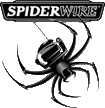ECSSS Seminar Outline for December
Winter Speckled Trout
Speckled trout regulations for NW Florida:
No less than 15″ and no more than 20’, except one fish per person over 20″
Fish are measured total length with a pinched (compressed) tail. Make the fish as long as possible. Season closed in Feb.
Winter Speckled Trout gear
Small spinning tackle and baitcasting tackle will be most popular. Light tackle combos in the 6-12# range will be ideal. Light action and tip sensitive rods in the 6’6″ to 7′ range are great. 6-12# mono or 8-10# is perfect. Light fluorocarbon leaders when using artificials or livebait will produce more fish. 10-15# fluoro is perfect.
Winter Areas to target Speckled Trout:
Speckled trout prefer water temperatures between 60 and 80 degrees. In the winter, when the water temps dip below 65 degrees, the trout will leave the cold water flats and gather in their wintertime homes.
In the summertime, trout can be found in nearly 90 percent of the water in our local fishery. In cold water, that percentage dropped dramatically with the temperature and anglers will find trout in only 5-10 percent of our local waters. Point is, cold water concentrates speckled trout making them much easier to target. You will also be surprised by the size of many of the trout.
Much like a flood tide on the East Coast with redfish, post-storm bay fishing for grouper or extreme winter low tides for our local redfish, this time of year is an extreme environment for speckled trout. So although, it may be extremely uncomfortable for anglers to be on the water, the trout fishing this time of year is superb.
Right now, trout will be gathering in local canals, bayous, deep creeks and area rivers. The name of the game is deeper and warmer water. We’ve looking for the deepest water in the areas. Water depths from 6-20 feet will be most productive. The areas listed above achieve this during the winter months. The canals and bayous often encounter less water movement from winds and tide, and many contain a darker, muddy bottom which will hold heat better than grass flats and sand flats. Rivers will naturally be warmer and trout will often times gather is areas that are deeper and have less current flow. Small intersections and cuts are ideal areas to target trout in the rivers during the winter.
In the Destin area, places like Joes Bayou, Indian Bayou and the deeper areas of Destin Harbor will hold lots of trout. To the east, deeper holes and cuts in Hogtown Bayou will still produce trout. Even further, La Grange and Alaqua Bayou and the rivers and creeks east of 331 near Freeport are excellent areas to target winter trout. Go further in West Bay, the warm water canal in North Bay is awesome although that is a catch and release zone but you can catch large trout there!
Nearest Fort Walton, Rocky Bayou, Boggy Bayou. Over in Shalimar, Garnier and Cinco Bayou are all excellent areas to target trout.
For those in the Navarre area or may want to fish that way, Santa Rosa Sound is a very good area with the Brickyard Bayou and the surrounding bayous of Soundside. Don’t forget about the canals of Tiger Point and Villa Venice. All of these canals are excellent. Also the East Bay area in Navarre particularly the East Bay River is excellent as well.
Techniques for catching Speckled Trout in the Winter
Slow. Slow, slow. The most important thing to remember about winter trout fishing is to slow your retrieve down to a crawl. Keeping your bait as close to the bottom as possible is the key. The trout will be on or near the bottom so this is also where your bait should be.
Artificial Baits
- The first technique which is often overlooked and can be very productive in finding trout by covering a vast amount of water is very slow trolling. Again, this will all take place in canals, bayous, deeper creeks and rivers. ¼-3/8 jigheads with Gulp! 3″ Shrimp, Gulp Swimming Shad and Swimming Mullet, sinking subsurface baits with rattles like Mirro. Catch 2000 and small sinking diving plugs from Rapala, Tsunami and Matzuo, as well as the much overlooked small Beetle Spins are all excellent choices for this technique. Slow trolling with your trolling motor is best but a quite 4-Stroke will also suffice. Take notice of where you catch fish and keep an eye on your bottomfinder for holes or bottom structure. You can return to these areas to cast to these good trout spots.
- Secondly, blindcasting canals, bayous, deep creeks and rivers is an excellent way to target trout. All the above baits will be a great choice. Berkley 4″ Sand Eels have become very popular baits for slow bumping for trout as you will notice the millions of worm holes throughout these areas. Slow, slow, slow tapping the bait on or near the bottom will produce best as the fish will be very sluggish in the cold water. Subsurface plugs also worked deep will produce larger trout if they are in the area. The insertion of a worm rattle will enhance your bait’s appeal with the addition of some underwater clicking which will surely entice bites. Remember, the trout will bite very softly and will sometimes feel like dead weight so be prepared to set the hook. Small diameter braided line will help you feel and see the subtle taps and bites. Watch your line and high-vis braid will help with this. Fish your baits very, very slowly.
Trout also have very soft mouths, often described as paper-like. Moderate hook sets are most productive and very sharp hook will help you connect with their very soft bite on slow worked plastics. With the subsurface plugs with multiple hooks, they will often hook themselves especially when slow trolling.
Livebait for winter Speckled Trout
In the same areas list above, livebait can be used to dramatically increase catch volume. Live Shrimp, small pinfish, croakers and mullet will be the most popular baits. Techniques will differ a bit for warmer water trout fishing. On or near the bottom will be your best bet. For livebaits, a #1-2 straight hook or circle hook from Mustad, Owner or similar will be ideal. Use a 3-4ft piece of 10-15# fluoro leader( I like long leaders) connects directly to your main line with a line to line know, or very small swivel will work. Use anything from a small slit-short to a ¼ oz. egg weight to drop your bait to the bottom. The longer leader will allow your livebait to more freely and off the bottom.
In areas such as canals, canal mouths, bayous and river banks, the use of the popping cork or regular cork can be used. Using a slit-shot halfway down your leader will push your bait towards the bottom. In water depths of 6-10 feet this can be a great technique, just remember to adjust your cork accordingly and get the actually bait down with the small weight.
Handling Speckled Trout
Speckled trout are much less sturdy than other inshore species such as redfish and flounder. They contain a small, slimy membrane over their scales and disruption of the membrane and scales can fatally injure these speckled trout. Always touch or handle a speckled trout with a wet, bare hand if possible. I know the water is freezing, but imagine someone rubbing a huge sheet of coarse sandpaper over your entire body. That would hurt, and that is exactly what a dry hand, a towel, rag and the deck of your boat feels like to a speckled trout. Also, a twine-like, knotted net feels the same way. I know PETA wouldn’t come picket your house, but it’s easy to take the correct steps during the release. If you’re catching them to eat, gaff them!!!







